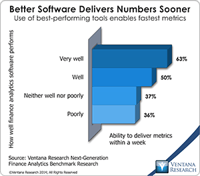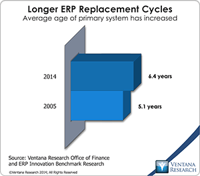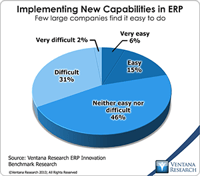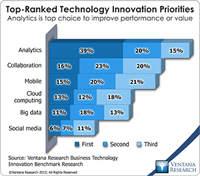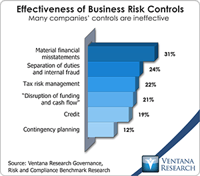Read More
Topics:
Microsoft,
Mobile,
SaaS,
Sales,
Sales Performance,
Salesforce.com,
Supply Chain Performance,
ERP,
HCM,
Human Capital,
Office of Finance,
Dynamics AX,
Dynamics GP,
Dynamics NAV Dynamics SL,
Kenandy,
PSA,
Sage Software,
Unit4,
Operational Performance,
Analytics,
Business Analytics,
Business Collaboration,
Business Performance,
Cloud Computing,
Collaboration,
Customer & Contact Center,
Financial Performance,
Workforce Performance,
CFO,
FinancialForce,
HR,
Infor,
Workday,
HANA,
Plex,
Professional Services Automation
Like most vendors of on-premises ERP and financial management software, in moving to the cloud Oracle has focused on developing for existing and potential customers the option of multitenant software as a service (SaaS). (I’m using the term “ERP” in its most expansive sense, to include such systems employed by all types of companies for accounting and financial management rather than only systems that are used by manufacturing and distribution companies.) Oracle’s ERP Cloud Service includes ...
Read More
Topics:
Microsoft,
Mobile,
SaaS,
Sales,
Salesforce.com,
ERP,
HCM,
Human Capital,
Office of Finance,
Dynamics AX,
Dynamics GP,
Dynamics NAV Dynamics SL,
Kenandy,
PSA,
Sage Software,
Unit4,
Operational Performance,
Analytics,
Business Performance,
Cloud Computing,
Collaboration,
Customer & Contact Center,
Financial Performance,
CFO,
FinancialForce,
HR,
Infor,
Workday,
HANA,
Plex,
Professional Services Automation
The keynote theme at this year’s Sapphire conference in Orlando was Simple. Top executives from SAP, a software company associated with complexity, stated and restated that its future direction is to simplify all aspects of its products and the ways customers interact with them and the company itself. SAP’s longstanding and commendable aspiration to thoroughness in its software will be giving way to an emphasis on elegance in its engineering. This objective is more than admirable – SAP’s future...
Read More
Topics:
Microsoft,
Mobile,
SaaS,
Sales,
Salesforce.com,
Supply Chain Performance,
ERP,
HCM,
Human Capital,
Office of Finance,
Dynamics AX,
Dynamics GP,
Dynamics NAV Dynamics SL,
Kenandy,
PSA,
Sage Software,
Unit4,
Operational Performance,
Analytics,
Business Collaboration,
Business Performance,
Cloud Computing,
Collaboration,
Financial Performance,
CFO,
FinancialForce,
HR,
Infor,
Workday,
HANA,
Plex,
Professional Services Automation
SAP recently presented its analytics and business intelligence roadmap and new innovations to about 1,700 customers and partners using SAP BusinessObjects at its SAP Insider event (#BI2014). SAP has one of the largest presences in business intelligence due to its installed base of SAP BusinessObjects customers. The company intends to defend its current position in the established business intelligence (BI) market while expanding in the areas of databases, discovery analytics and advanced...
Read More
Topics:
Predictive Analytics,
SAP,
Business Objects,
IT Performance,
Analytics,
Business Analytics,
Business Intelligence,
Business Performance,
Customer & Contact Center,
KXEN,
Operational Intelligence,
HANA,
Lumira,
SAP insider
A recent news release by Robert Half, a staffing company that specializes in accounting and finance personnel, covered what it sees as the most important attributes required for auditors in the 21st century. “7 Attributes of Highly Effective Internal Auditors” covers the people dimension of the profession and focuses on the non-technical requirements of the role, including relationship-building, teamwork, and diversity. No doubt these skills are a must for just about anybody working in a modern...
Read More
Topics:
Fraud,
Governance,
GRC,
Office of Finance,
audit,
Analytics,
Business Analytics,
Business Performance,
Financial Performance,
Governance, Risk & Compliance (GRC),
compliance,
Infor,
Risk,
HANA,
Oversight Systems
SAP recently announced its new Fraud Management analytic applications. Currently in “controlled” (limited) release, it’s a promising start for the product and a good example of the type of business process revolution that’s possible when companies can execute complex analytics on big data sets using in-memory and other advanced processing techniques. Over the next several years a wide swath of basic corporate processes will be transformed by the shift to in-memory processing and big data...
Read More
Topics:
SAP,
Fraud,
Governance,
GRC,
Office of Finance,
audit,
Analytics,
Business Analytics,
Business Performance,
Financial Performance,
Governance, Risk & Compliance (GRC),
compliance,
Risk,
HANA
Read More
Topics:
Mobile,
Predictive Analytics,
Real-time,
Sales Performance,
SAP,
Supply Chain Performance,
ERP,
Operational Performance,
Analytics,
Business Analytics,
Business Collaboration,
Business Performance,
Cloud Computing,
Customer & Contact Center,
Financial Performance,
In-memory,
Workforce Performance,
CRM,
finance,
Social,
Business Suite,
Financial Performance Management,
HANA
SAP has inaugurated a new series of business applications it calls Enterprise Performance Management (EPM) OnDemand as a cloud-based subscription service. The applications are part of SAP’s EPM version 10 suite, which it introduced last year. It’s a first step in what is likely to be a portfolio of general-purpose, lightweight and relatively low-cost apps designed to be used on mobile devices. Using HANA on the back end, the applications can deliver high performance in accessing masses of...
Read More
Topics:
Big Data,
Performance Management,
Sales Performance,
SAP,
Supply Chain Performance,
Office of Finance,
expense,
Operational Performance,
Analytics,
Business Analytics,
Business Collaboration,
Business Performance,
Cloud Computing,
Customer & Contact Center,
Financial Performance,
Workforce Performance,
Business Applications,
FPM,
HANA
For me, the most significant announcement to come out of the recent SAPinsider conference was the company’s formal release of Business Planning and Consolidation (BPC) running on HANA, SAP’s in-memory computing appliance. For me, HANA is a potential “game changer” for planning, statutory consolidation and other analytics-supported financial processes because of the substantial reduction it enables in processing time from loading to reporting. In-memory systems provide a substantial edge in...
Read More
Topics:
Big Data,
Mobile,
Planning,
Sales Performance,
SAP,
Social Media,
Supply Chain Performance,
Customer Experience,
ERP,
GRC,
Office of Finance,
Budgeting,
IFRS,
XBRL,
Operational Performance,
Analytics,
Business Analytics,
Business Collaboration,
Business Mobility,
Business Performance,
Cloud Computing,
Financial Performance,
In-memory,
Workforce Performance,
finance,
Financial Performance Management,
GAAP,
HANA
